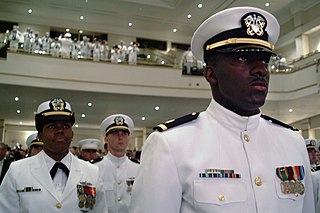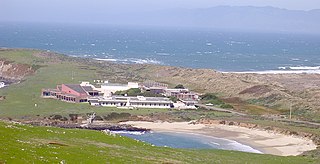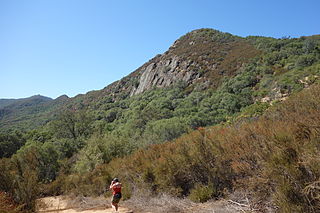
The Army Reserve is the active-duty volunteer reserve force and integrated element of the British Army. It should not be confused with the Regular Reserve whose members have formerly served full-time. The Army Reserve was previously known as the Territorial Force from 1908 to 1921, the Territorial Army (TA) from 1921 to 1967, the Territorial and Army Volunteer Reserve (TAVR) from 1967 to 1979, and again the Territorial Army (TA) from 1979 to 2014.

The Australian Army Reserve is a collective name given to the reserve units of the Australian Army. Since the Federation of Australia in 1901, the reserve military force has been known by many names, including the Citizens Forces, the Citizen Military Forces, the Militia and, unofficially, the Australian Military Forces. In 1980, however, the current name—Australian Army Reserve—was officially adopted, and it now consists of a number of components based around the level of commitment and training obligation that its members are required to meet.

The United States Army Reserve (USAR) is a reserve force of the United States Army. Together, the Army Reserve and the Army National Guard constitute the Army element of the Reserve components of the United States Armed Forces.

The Air Force Reserve Command (AFRC) is a Major Command (MAJCOM) of the United States Air Force, with its headquarters at Robins Air Force Base, Georgia. It is the federal Air Reserve Component (ARC) of the U.S. Air Force, consisting of commissioned officers and enlisted airmen.

The Naval Reserve Officers Training Corps (NROTC) program is a college-based, commissioned officer training program of the United States Navy and the United States Marine Corps.

Regiment Potchefstroom Universiteit is an artillery regiment of the South African Army. As a reserve unit, it has a status roughly equivalent to that of a British Army Reserve or United States Army National Guard unit. It is part of the South African Army Artillery Formation.
A military reserve force is a military organization composed of citizens of a country who combine a military role or career with a civilian career. They are not normally kept under arms and their main role is to be available to fight when their military requires additional manpower. Reserve forces are generally considered part of a permanent standing body of armed forces. The existence of reserve forces allows a nation to reduce its peacetime military expenditures while maintaining a force prepared for war. It is analogous to the historical model of military recruitment before the era of standing armies.

The Motte Rimrock Reserve, a unit of the University of California Natural Reserve System affiliated with the University of California, Riverside, is an ecological reserve and biological field station located on a small plateau overlooking the Perris Valley in west-central Riverside County, California, United States.

The Blue Oak Ranch Reserve, a unit of the University of California Natural Reserve System, is a ecological reserve and biological field station in Santa Clara County, California. It is located on 3,260 acres (13.2 km2) in the Diablo Range, northwest of Mount Hamilton, at 1,500 ft (460 m) elevation.

Bodega Marine Reserve is a 362-acre (146 ha) nature reserve and marine reserve on the coast of northern California, located in the vicinity of the Bodega Marine Laboratory on Bodega Head. It is a unit of the University of California Natural Reserve System, administered by the University of California, Davis.

Quail Ridge Reserve is a 2,000-acre (810 ha) nature reserve in northern California. It is located in the vicinity of Lake Berryessa and the Blue Ridge Berryessa Natural Area, in Napa County, California.

Sedgwick Reserve is a 5,896-acre (2,386 ha) nature reserve in California. It is located in the San Rafael Mountains, 35 miles north of Santa Barbara near the town of Santa Ynez in Santa Barbara County, California.
The reserve components of the United States Armed Forces are military organizations whose members generally perform a minimum of 39 days of military duty per year and who augment the active duty military when necessary. The reserve components are also referred to collectively as the National Guard and Reserve.
Cambridge University Air Squadron, abbreviated CUAS, formed in 1925, is the training unit of the Royal Air Force at the University of Cambridge and forms part of the Royal Air Force Volunteer Reserve. It is the oldest of 15 University Air Squadrons in the UK. For many years it was based at Cambridge Airport at Teversham.

Stebbins Cold Canyon Reserve is a unit of the University of California Natural Reserve System and is administered by the University of California, Davis. It is within the Blue Ridge Berryessa Natural Area, in the Northern Inner California Coast Ranges.
The Reserve of the Supreme High Command comprised formations and units which acted as the principal military reserve of the Soviet Red Army during World War II and now of the Russian Armed Forces.

Regiment University of Stellenbosch was an infantry regiment of the South African Army. As a reserve unit, it had a status roughly equivalent to that of a British Army Reserve or United States Army National Guard unit. It was part of the South African Army Infantry Corps.

Regiment University of Witwatersrand was an artillery regiment of the South African Army. As a reserve unit, it had a status roughly equivalent to that of a British Army Reserve or United States Army National Guard unit. It was part of the South African Army Artillery Corps.

Regiment University of Pretoria was an artillery regiment of the South African Artillery. As a reserve unit, it had a status roughly equivalent to that of a British Army Reserve or United States Army National Guard unit. It was part of the South African Army Artillery Corps.

The Regiment Universiteit Oranje-Vrystaat was an artillery regiment of the South African Artillery. As a reserve unit, it had a status roughly equivalent to that of a British Army Reserve or United States Army National Guard unit. It was part of the South African Army Artillery Corps.















